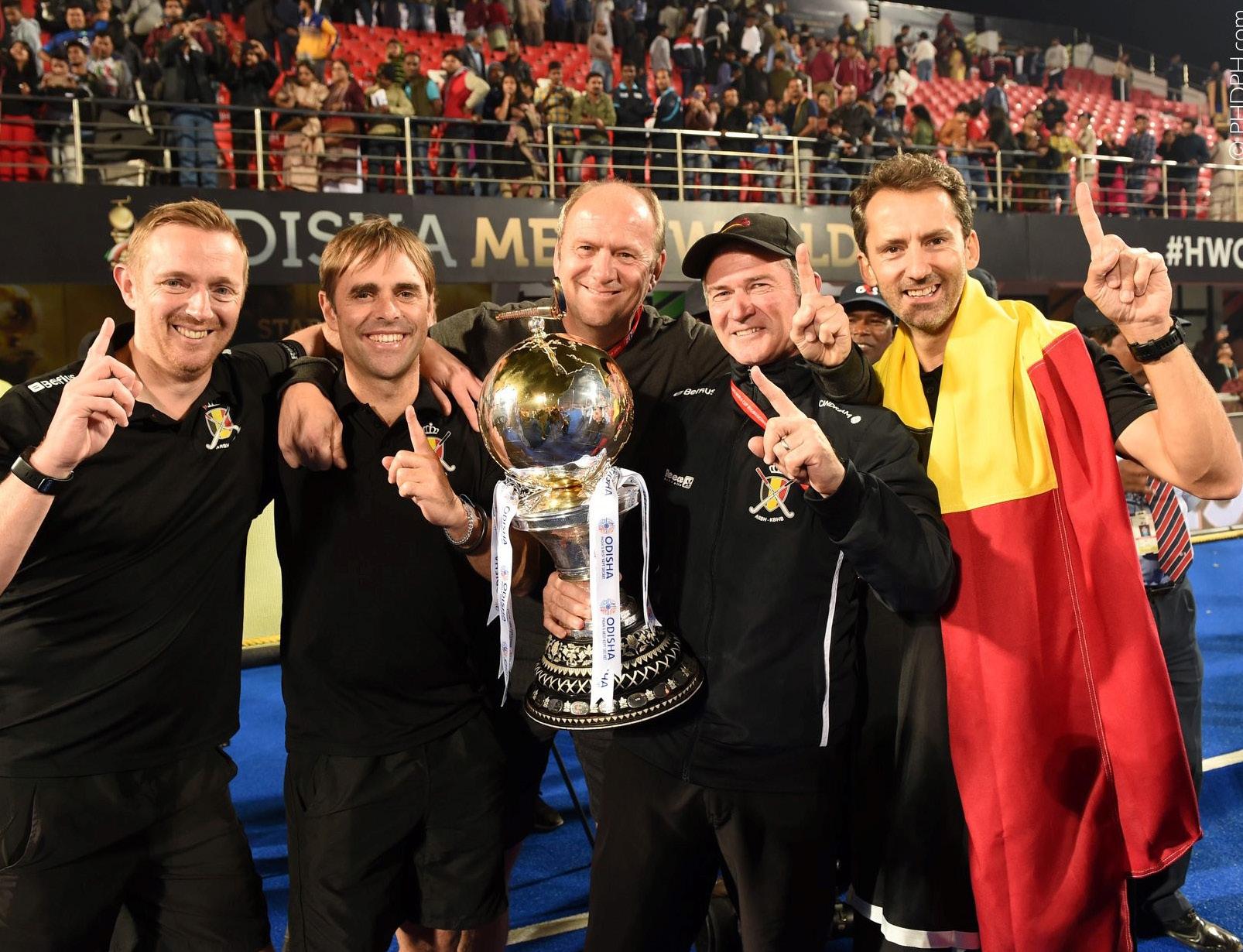
4 minute read
THE RIGHT BALANCE OF RECOVERY AND PERFORMANCE CAN TAKE YOUR BODY TO A HIGHER LEVEL.
- Julien Rysman -
MEDICAL STAFF RED LIONS / OSTEOPATH
Julien Rysman (45) is an osteopath with a lot of hockey expertise. From an early age, he has had an outspoken preference for all things medical and scientific. The choice of his studies and career was always guided by finding a balance between sport and his professional activities. In 2000 - with a recently earned degree from ULB in hand - he joined the medical staff of football club RSC Anderlecht, where he stayed for four years. He left because he wanted to focus more on his family life and because he wanted to start his own practice. Rysman became an assistant in osteopathy at ULB and signed a contract with the Royal Hockey Club Leuven, where he remained until 2016. Then he joined the staff of the Red Lions, who had just won a silver medal at the Rio Olympics.
Mr Rysman, you are treating players from different clubs, with each club having its own training techniques and medical staff. How do you build a physiotherapy protocol that can be applied to everyone or is everything worked out individually?
Good cooperation and communication is very important.” That is why we have regular contacts with colleagues at the various clubs during the season. Meetings are organised, where we try to develop common therapeutic strategies. Players with injuries receive specific treatment, depending on the particular injury, of course. The club’s physiotherapist and I then alternate treatment, depending on where the player concerned is at the time. This is the only way we will be able to deal with it properly. If a player suffers an injury during a game or tournament with the Red Lions, it is of course my responsibility. I am always with the group, no matter where in the world. When a player is injured, my hands immediately spring into action. And I will not take my hands off until the injury is completely resolved!
There will be differences, of course, but by and large everything is about the same. In tournaments, of course, the sequence of matches and the limited time between matches must be taken into account. During a world championship or at the Olympic Games, the last matches - e.g. the semi-final and final - are often played in quick succession. So quick recovery is the message here. The right balance of recovery and performance can take your body to a higher level. We have a very precise and individualised rehabilitation protocol for each player according to his habits and preferences. Active, passive and also nutritional techniques are used to recover as quickly as possible.
Are recovery techniques after an international match significantly different from those at national matches and what is your protocol ?
Passive and active techniques, you say...
Active recovery is best achieved with an activity in which you use the same muscles as during the activity in which you experienced muscle fatigue or soreness. This means that you should do a cooling down, preferably in a related form of the sport in which you have been training. In addition, several scientific studies show that training the muscles in the upper limbs in the gym (with appropriate loading) helps recovery in the lower limbs (through the hormonal boost). Passive recovery is, of course, resting and allowing your body to recover. And then, of course, you have the fuels and building materials that need to be replenished. Proteins, responsible for fast recovery, and carbohydrates - the energy supplier - should be taken soon enough after exercise for the recovery process to begin. And meanwhile not forgetting to keep the fluid intake at the required level.
What is your experience with cooling as a recovery tool ?

These techniques are very useful. We know that immersion baths have proven their worth in scientific literature, but ice baths are also used (a cold bath in the hotel room also works very well, by the way). Cooling compression devices are also used for more localised applications in case of tissue damage. A cooling-compression device combines ice therapy and compression therapy in one user-friendly device. The ice water circulates quickly through the bandages and combines with compression. This combination provides a better therapy for musculoskeletal disorders. Besides relieving symptoms such as pain and swelling, Game Ready stimulates natural tissue healing and actually speeds up recovery.
The players of the Red Lions regularly play matches in regions where the temperatures are very high. How do you ensure that they (literally) keep their cool?
There are different methods and through our partners Sport Vlaanderen and Adeps we have the latest technologies at our disposal. We also exchange a lot of information with the other therapists of Team Belgium of the Belgian Interfederal Olympic Committee during our webinars. Vincent Callewaert always presents us with the latest scientific publications and recovery techniques. I will keep our methods as secret as possible. What I can say is that we use cooling clothes, cooling vests and ice water tanks to put towels in during games or training sessions to cool down the most important areas such as the neck, the hollows of the knees, the groin area and especially the inside of the elbow.








